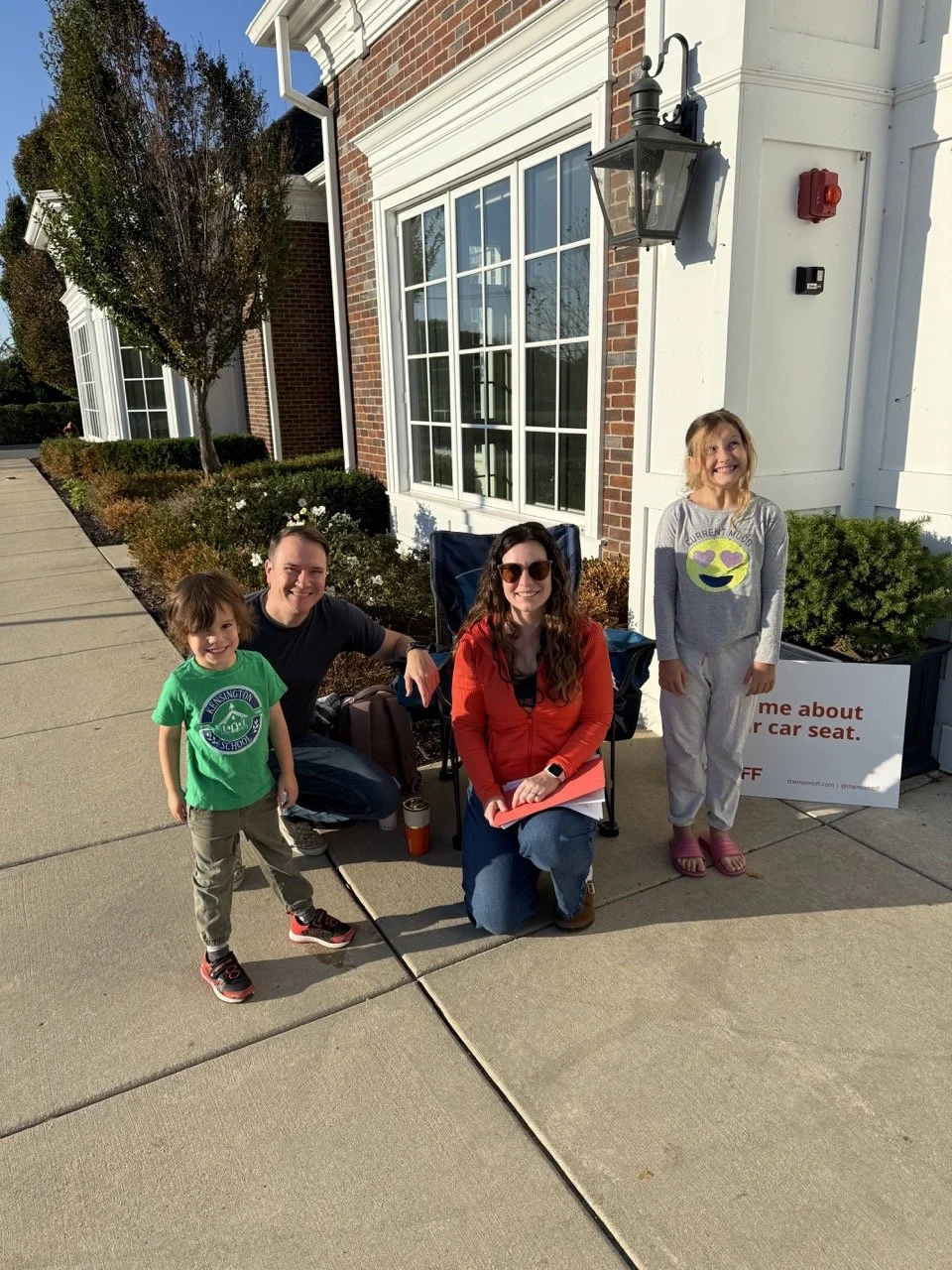Child Passenger Safety Week 2025
In honor of Child Passenger Safety Week (Sept. 21–28), I organized two free car seat check events in my community. The goal was simple: help parents and caregivers make sure their car seats were installed properly, offer recommendations based on best practices, and empower them to handle their seats on their own.
Car seat misuse is unfortunately very common. A small adjustment in harness height, installation angle, or even replacing an expired seat can make the difference in a crash.
By the Numbers: 2 Days, 13 Families, 16 Car Seats
Parents walked away more confident and equipped with practical knowledge to keep their children safer in the car. And my biggest takeaway? Everyone is trying their best and eager to learn. That makes me so grateful for the opportunity to share this work.
The Top 5 Car Seat Findings
I was very impressed by the number of good installations and well-meaning parents I came across. We’re all just doing our best! That said, here are the top five issues I saw recur the most during my checks:
Straps that were twisted and/or too loose
This happens to the best of us (even me!). Taking just a few extra moments to flatten and tighten your child’s harness straps can make a huge difference in safety.
Tether misrouting or misuse
The tether anchor can be confusing, especially around fixed headrests (looking at you, Tesla). I also saw lower anchors routed through the wrong belt paths or combined with a seatbelt (a no-go for most seats—always check your manual).
Unapproved seat protectors
I get it — no one wants to scuff their leather seats. But unless your car seat manual says a protector or thin towel is allowed, skip it. Many aftermarket seat protectors haven’t been crash tested with your seat. I’d rather have a few dents in my leather than an injured kid.
Reclined seat backs
One of my favorite tricks for getting a nice, tight install is to recline the vehicle seat, tighten the belt, and then put the seat back upright. But that last step is crucial: car seats can’t be installed on a reclined seat back. If you need more recline, adjust the car seat itself, not the vehicle seat.
Seatbelt not locked with the Evenflo Revolve
The Revolve’s LockStrong tensioning feature looks and feels like a lock-off, but it isn’t. The manual specifies you must also lock the seatbelt. This is a super popular seat, and I love it for it’s nearly foolproof installation, but it’s easy to miss that extra step.
Why a CPST Car Seat Check Matters
These issues aren’t about “doing it wrong.” They’re about how complex and confusing car seats can be. Every car, every seat, and every child is different — and even experienced parents (like myself) get tripped up. That’s why free car seat installation checks are so valuable: a second set of trained eyes can catch the small details that matter most in a crash. I don’t pretend to know everything about every seat, so oftentimes I’ll provide non-judgmental tips and advice based on general best practices and remind you of the golden CPST rule: Check. Your. Manual.
Illinois Car Seat Laws: What Every Parent Should Know
In Illinois, the Child Passenger Protection Act sets clear requirements to keep kids safer on the road:
Children under age 2 must ride rear-facing unless they exceed 40 pounds or 40 inches (whichever comes first).
All children under age 8 are required to be properly secured in a child safety seat or appropriate booster seat.
Children ages 8 through 15 must use a seat belt (or child restraint) when riding in a vehicle.
Children aged 8 to 12 must continue to ride in the back seat of a vehicle. It is recommended that children stay in a booster seat until they are tall enough to properly use an adult seatbelt (or “five-step”) — because even if they’re the right age, their bodies may not be ready.
All children under the age of 13 should stay in the backseat, according to the National Highway Traffic Safety Administration (NHTSA), the American Academy of Pediatrics (AAP), and as well as the Centers for Disease Control (CDC).
You can get fined up to $200 for violating car seat law. Save yourself the hassle: schedule a free car seat check.
A Word of Thanks
My work as a CPST is to help families ensure the safety of their children. I absolutely love giving back to my community in this capacity and getting the opportunity to meet new families. I couldn’t have done it without Lifetime Health & Wellness and Kensington School for generously lending me their (parking) spaces to help local families. And to the 13 families who came out, thank you for your willingness to learn and your graciousness. Together, we made 16 riders safer!
As a reminder: car seat checks are a free service I offer. If you have questions, reach out. Every child deserves to ride safely, every trip, every time.


